June - July 2015
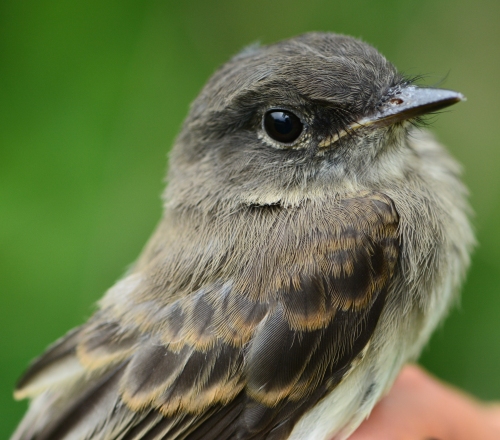
Over the summer we banded 686 new birds across 61 species. Our top five species were Gray Catbird (86), Cedar Waxwing (69), American Redstart (57), Red-eyed Vireo (47) and Hooded Warbler (36). Eastern Phoebe was a close runner-up with 35. This young Eastern Phoebe banded on June 6th was our first hatch-year bird of the year.

We had several interesting photo highlights this season, including this hatch-year Dark-eyed Junco. Although these birds do breed in Pennsylvania, we don't often see them in this juvenal plumage. Since their breeding grounds are typically not close to the banding station, they tend to find our nets only after they have undergone their first prebasic molt, replacing body feathers and some wing coverts. A closer look at the streaks of this juvenile junco reminds us why they are grouped taxonomically with the sparrows.
And speaking of birds breeding in Pennsylvania...
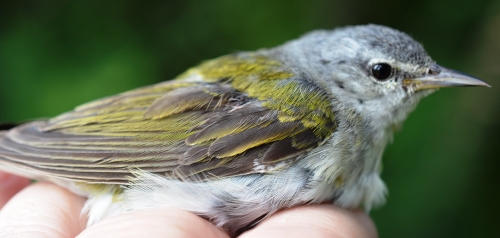
...we were quite surprised to see this adult male Tennessee Warbler on July 23rd. According to Cornell's All About Birds website, "The Tennessee Warbler breeds no closer to the state of Tennessee than northern Michigan, more than 600 miles away, and it winters some 1,400 miles away in southern Mexico and southward."
While we commonly see this species during migration, this was only the second Tennessee Warbler banded during the summer at Powdermill-- the other was a second-year female banded on July 13, 2011.
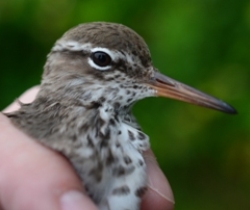
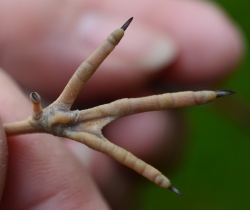
Not quite as unusual, but a welcome visitor nevertheless, this Spotted Sandpiper (the only one seen over the summer) was banded on June 2nd.
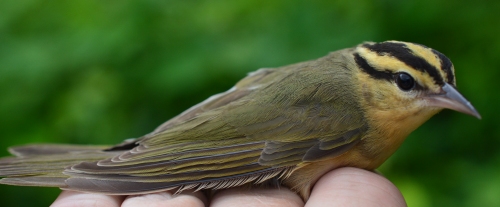
A Worm-eating Warbler is always a nice capture, and this sleek, handsome adult male from June 16th was no exception.
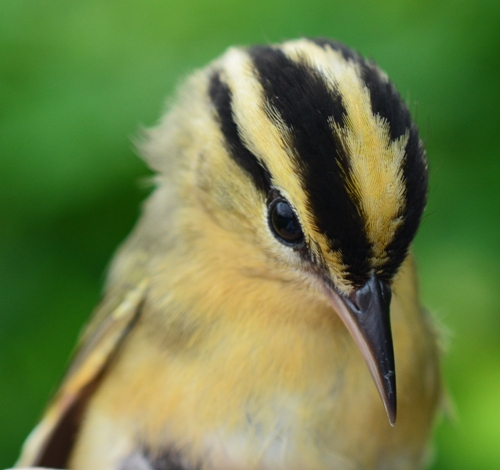
Another look at the striking plumage of the head of the Worm-eating Warbler and its long, tapered bill.
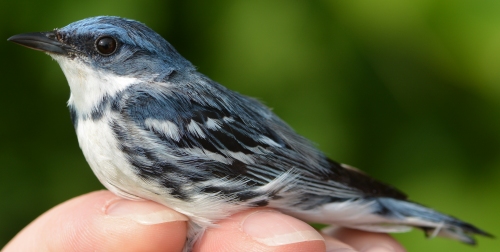
Always a favorite, we were lucky enough to band this adult male Cerulean Warbler on July 2nd; it was also the only one of its kind this season.
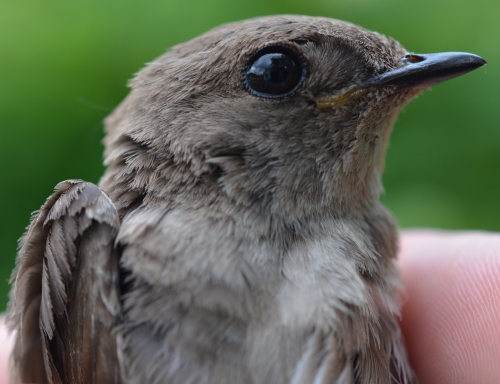
We caught one Northern Rough-winged Swallow on June 30th, an adult female with a brood patch.
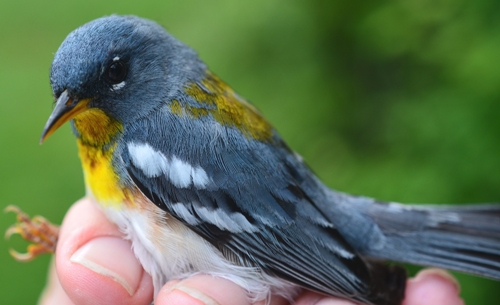
This handsome adult male Northern Parula, banded June 16th, was also the only one of its kind banded this summer.
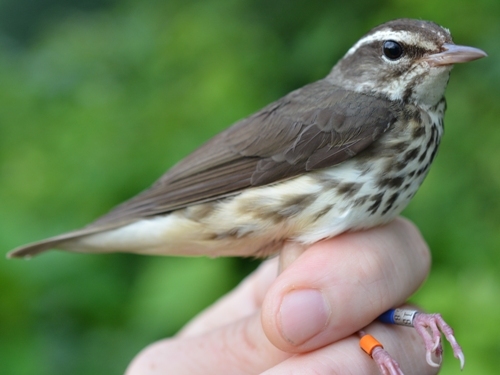
We had two interesting recaptures this summer. One was this Louisiana Waterthrush, originally banded here as a second-year bird on May 5, 2010 (therefore hatched in 2009, which makes it a six-year-old bird this year). Note the color bands on this bird's legs. Louisiana Waterthrushes are a great bioindicator of stream health. If human industry (e.g. acidification from coal power plants) are negatively influencing stream insect abundance the Louisiana Waterthrushes will in turn have reduced breeding success. Color bands allow researchers here at Powdermill to follow individual birds over time without re-catching them.
Upon looking at our encounters with this one individual, it had undoubtedly provided good data for that study, as it has returned to Powdermill every year, most likely breeding along one of the streams not far from the lab; it has been caught in our nets a total of 20 times, or about 3-4 times each breeding season.
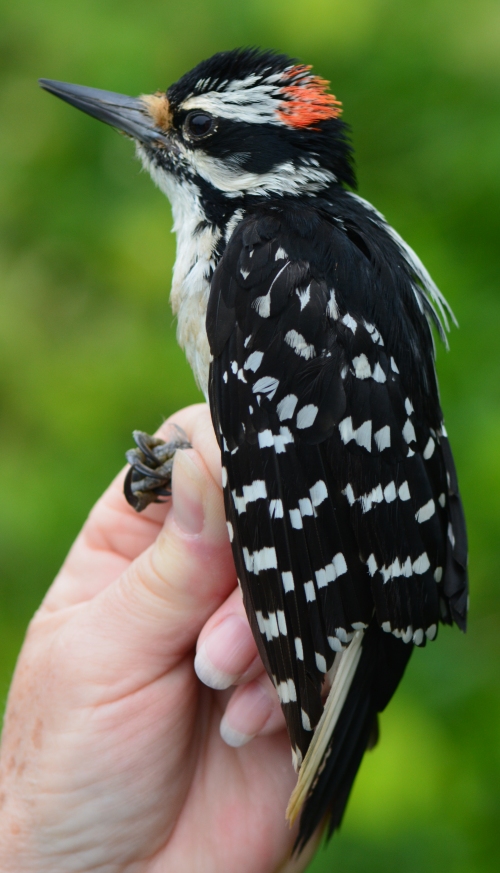
Another recaptured bird that got our attention was this Hairy Woodpecker. This male was originally banded on August 25, 2009 as an after-second-year bird (having been hatched in 2007 or before), making this individual at least eight years old.
Unlike that frequently-seen Louisiana Waterthrush, our most recent encounter with this bird was the fifth time he has been recaptured here-- once in June of 2012, twice in 2013 (February and May), once in May of 2014 and finally on June 2nd of this year.
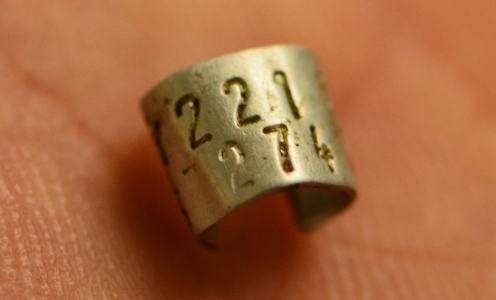
Visitors to the lab often ask us if we ever replace bands. Usually a banded bird keeps its band for life since its legs are full-grown once it leaves the nest. However, the band of this Hairy Woodpecker was certainly showing some wear as you can see in the photo (probably from rubbing on tree bark!). So in this instance, since it was becoming hard to read, we did replace the band.
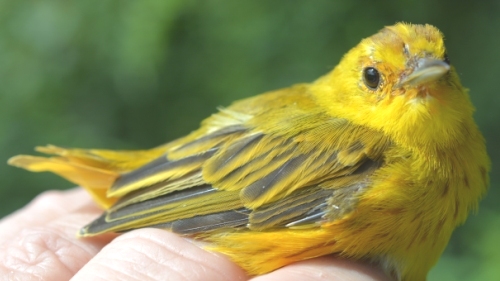
By the end of July many birds, especially our early arrivals like this Yellow Warbler, are already wrapping up the breeding season and entering the next phase of their life cycle--MOLT. Spring may be all about handsome breeding plumages, but from mid-July through early Fall, birds are busy replacing those worn out feathers!
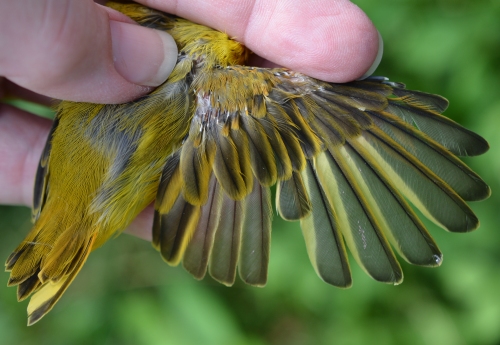
This spread wing photo of the same adult Yellow Warbler shows the active replacement of wing coverts, flight feathers and tail.

Remember that Tennessee Warbler from July 23rd? This is a photo of his wing, also in active molt. Because this individual did not breed in the area he is considered a molt migrant. Ornithologists tend to think that molt migration is relatively uncommon but new technology which allows us to track individuals across greater distances and time may prove that supposition wrong.
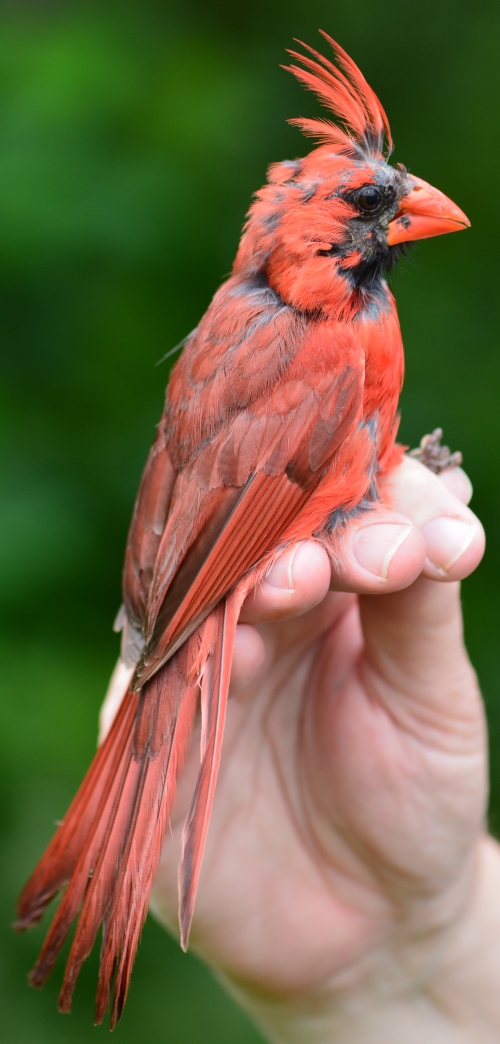
Cardinals are among some of the most motley-looking birds that we see during the summer, as you can tell from this male who seems to be sporting some strange-looking headdress.
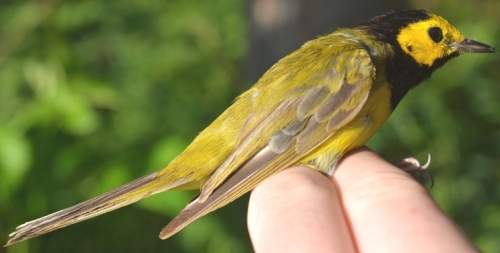
The wing of this Hooded Warbler also looks a little worse for wear...
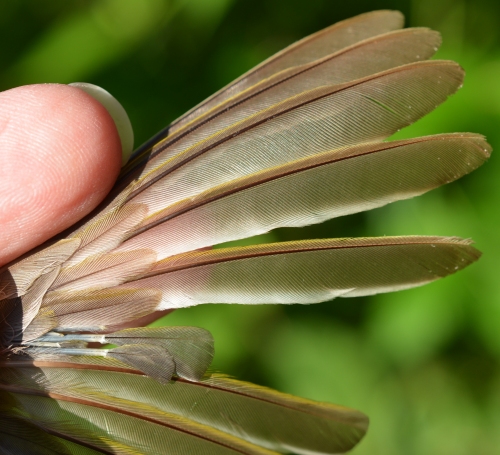
but closer inspection shows that brand- new feathers are on their way in!
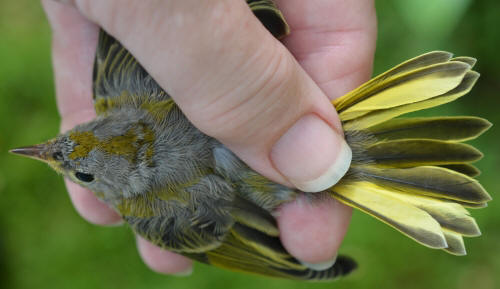
Of course, it's not just the adults who are molting at this time of year-- young birds that have been out of the nest for a few weeks also start replacing some of those lesser-quality feathers.
It's hard to recognize this individual (banded July 7, aged 'local') as a Yellow Warbler except for the presence of that distinctive yellow tail. Just give him a few weeks...
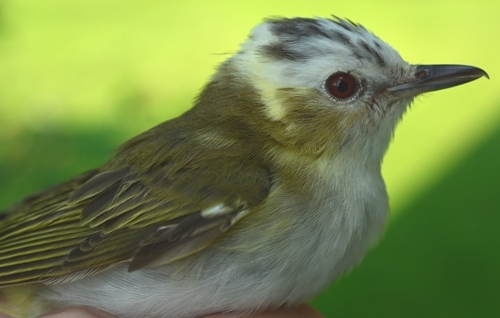
Any guesses at the species of this bird? That hooked beak should be a pretty good clue, and the eye color should point you in the direction of the Red-eyed Vireo, our fourth most-common species.
This may not look like the Red-eyed Vireo pictured in your field guide, though-- this individual has a condition know as leucism, characterized by the lack of pigment in some of its feathers.
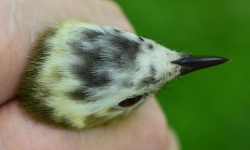
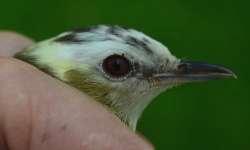
Note the unusual coloration on the head and the few leucisitc wing coverts present.
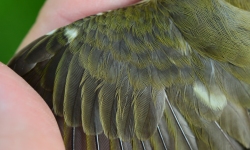
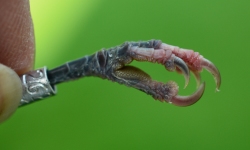
Interestingly, this bird was also lacking pigment on areas of both feet!
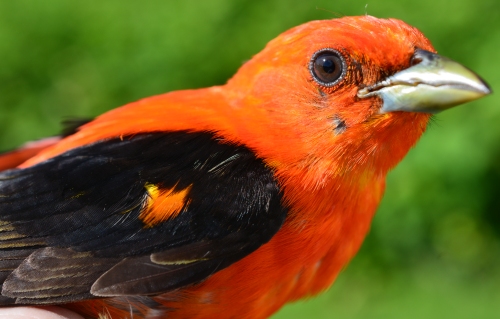
We see several birds each season with partial leucism, along with other abnormalities in plumage, such as this Scarlet Tanager (banded June 24th)with an unusual patch of color on its wing.
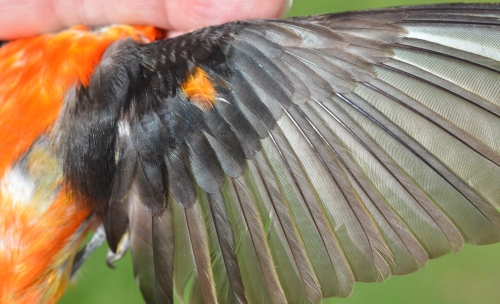
The same wing, extended. Note the two generations of feathers on this bird's wing, a clear illustration of the difference between the lesser-quality juvenal feathers grown in the nest (brown and dull) and the higher-quality feathers (darker, more colorful and lustrous) that were replaced last summer once this bird had left the nest.
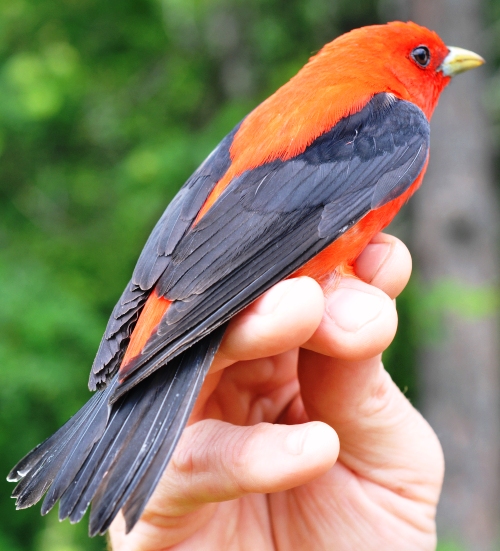
An adult male Scarlet Tanager for comparison. We banded this individual on June 25th; he was one of 18 banded this Summer.
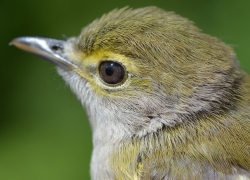
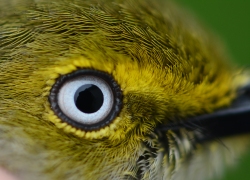
And for our final pictorial highlight of the summer, we thought you might enjoy a close-up look at the eye of the White-eyed vireo.
As with several species of birds, the eye of this species starts out as the muddy grayish color seen in the photo on the left of a young vireo from July 23rd. The adult (right), with the bright white eye, was banded on June 2nd.
